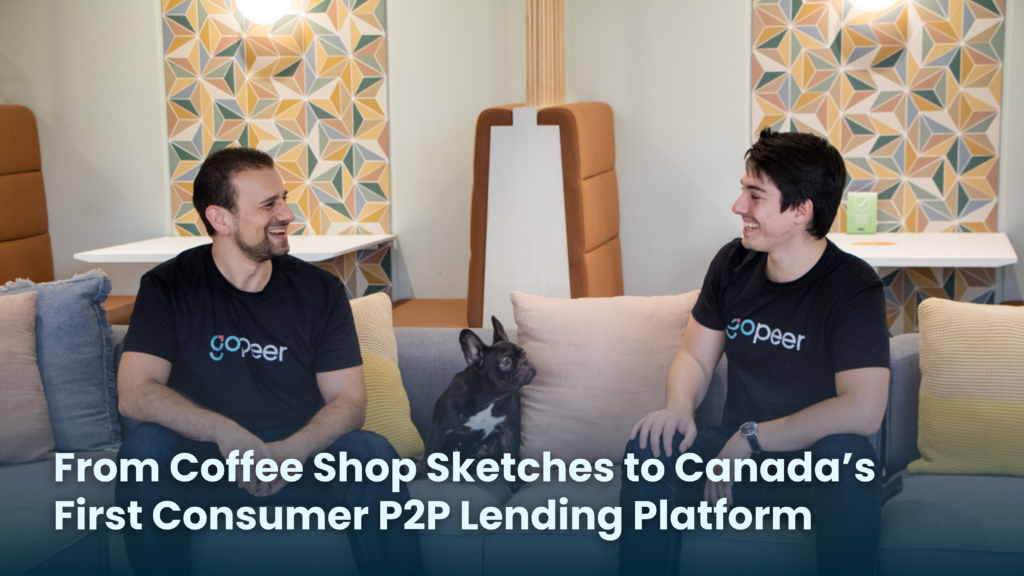Five years ago, two founders set out to reimagine lending in Canada. In this post, we look back with co-founders Marc and Joseph on how it all began, the hurdles they faced, the impact they’ve made, and their vision for the next five years.
What made you decide to co-found goPeer?
Marc: When I set out to build goPeer, I knew I needed the right partner – someone who not only had the technical expertise but also believed deeply in the mission. Joseph stood out immediately. His technology background complemented my financial expertise, and from our first conversations, I knew he was the right co-founder. From sketching ideas in coffee shops to long nights building the platform, we built goPeer on shared conviction and complementary strengths.
Joseph: I’ve always been entrepreneurial. I had founded and sold a startup before, but after years in a 9-to-5 job, I was eager to build something meaningful again. I met Marc at an event where both of us were looking for co-founders. What struck me was Marc himself, you need the right partner above all else. And I loved the idea: it was new, it was challenging, and it created social good on both sides of the platform. It felt like something I could be proud to work on.
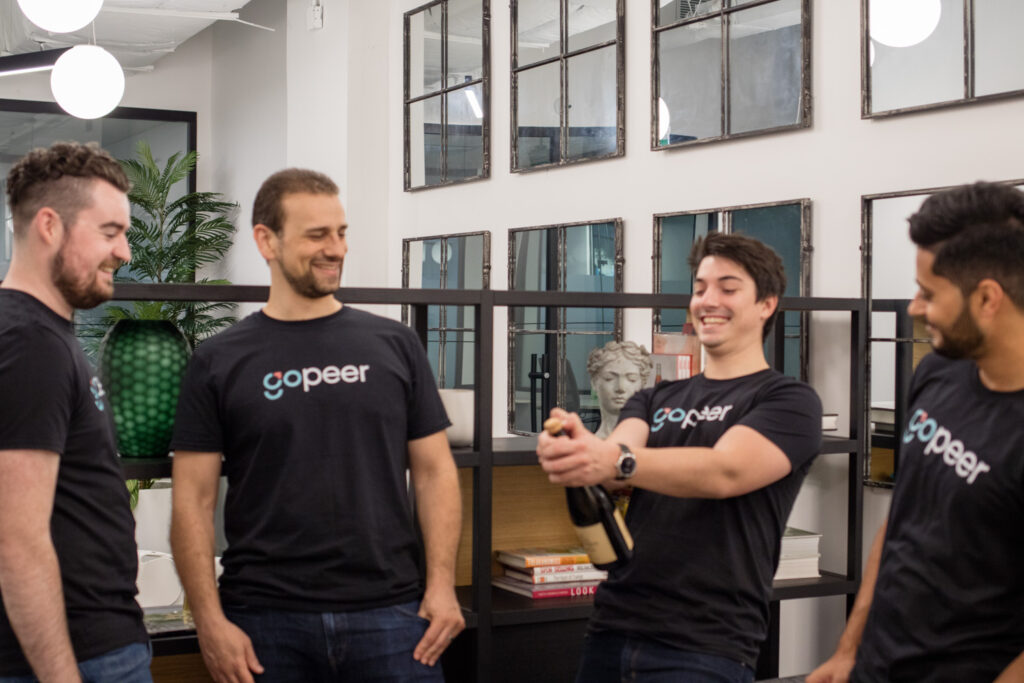
Can you take us back to the first few months of launch? What was it like?
Marc: Chaotic and exhilarating! Within days we were flooded with applications, far more than I expected. I remember underwriting loans all day and speaking to borrowers and investors on the phone. Things broke constantly, the signup flow, the underwriting process, but every funded loan felt like validation. When we saw the first successful loan funded by investors, it felt like proof this could really work.
Joseph: It was exciting and exhausting. We had spent a year building the technology, and launch was the first time we brought it to production. Everything worked, but there were so many loose ends to fix. We worked long nights and were nervous to see how the market would respond. We had been growing email lists, but had no clue what would happen. The reception was strong. Stressful, yes, but unforgettable.
What was the biggest hurdle in the early days?
Marc: Doing everything at once with a tiny team, underwriting, compliance, customer service, fundraising. The other major hurdle was trust. Canadians had never heard of peer-to-peer lending before, and building credibility was crucial. That meant transparency, strong compliance, and consistent results.
Joseph: The biggest challenge was business viability. Specifically, acquiring borrowers. This was a brand-new product in Canada, and many people had never heard of it. Trust was a barrier, and we were also launching during the pandemic. In some ways the pandemic helped since people became more open to doing things online, but awareness and acquisition costs were still difficult to manage.
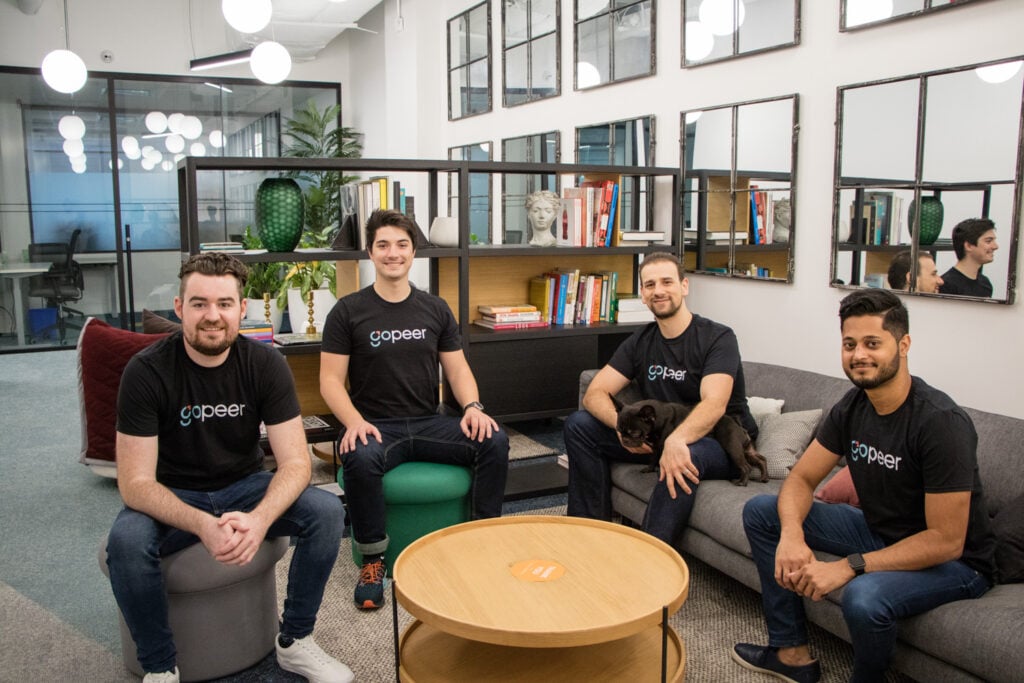
Was there a moment you thought goPeer could really work?
Marc: Yes! When clients started referring their friends. Marketing is one thing, but nothing is stronger than someone saying, “This helped me get out of debt, you should try it too.” Another moment was when we saw a borrower return as an investor. That was the dream from the beginning, a community where people could move from needing help to offering help.
Joseph: It wasn’t one single moment, but many small signs. Seeing investors start cautiously, then put in more money as they gained confidence, was huge. On the borrower side, the fact that loans were being accepted and solving real problems was proof. And when acquisition costs came down to a sustainable level, that was when we knew the business model could work long term.
Looking at goPeer today, what makes you proudest?
Marc: The community. It’s not just loans and investments, it’s a win-win system where borrowers save thousands and investors earn strong returns. But most importantly, it’s people helping each other in a human way.
Joseph: That we’ve built a sustainable business that adds real value. Borrowers are improving their finances, and investors are accessing an asset class once reserved for the wealthy. It’s both socially impactful and financially rewarding, exactly what we set out to build.
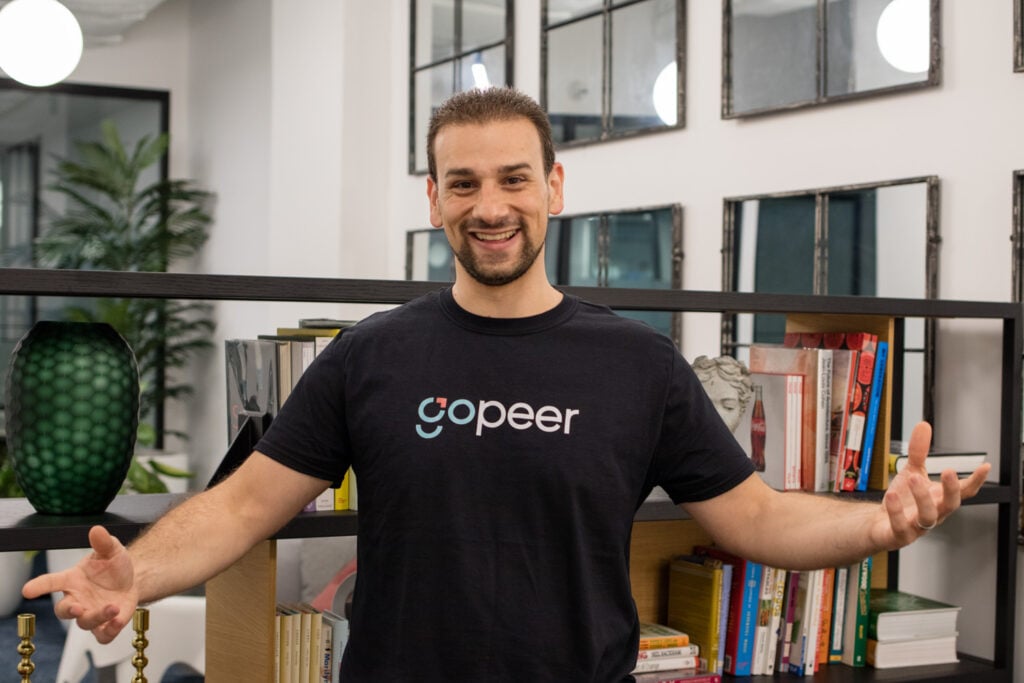
What’s the most rewarding feedback you’ve received?
Marc: When borrowers tell us, “You changed my life.” Those words stick. Helping people escape cycles of high-interest debt, then seeing them come back as investors, that’s the most rewarding feedback of all.
Joseph: I read every review, Google, Reddit, everywhere. The most rewarding stories are borrowers who finally got out of debt and investors who are building passive income. That’s when I know we’re making the impact we promised.
What do you think goPeer’s impact has been on Canadians, both borrowers and investors and the community at large?
Marc: We’ve shown that finance can be people-powered. Borrowers gain access to affordable credit, investors earn attractive returns, and Canadians see that there’s a more transparent, fair, community-driven way to borrow and invest.
Joseph: If I had to put it in one word: empowering. Borrowers feel in control and able to move forward. Investors gain access to returns they couldn’t get elsewhere. Both sides are empowered.
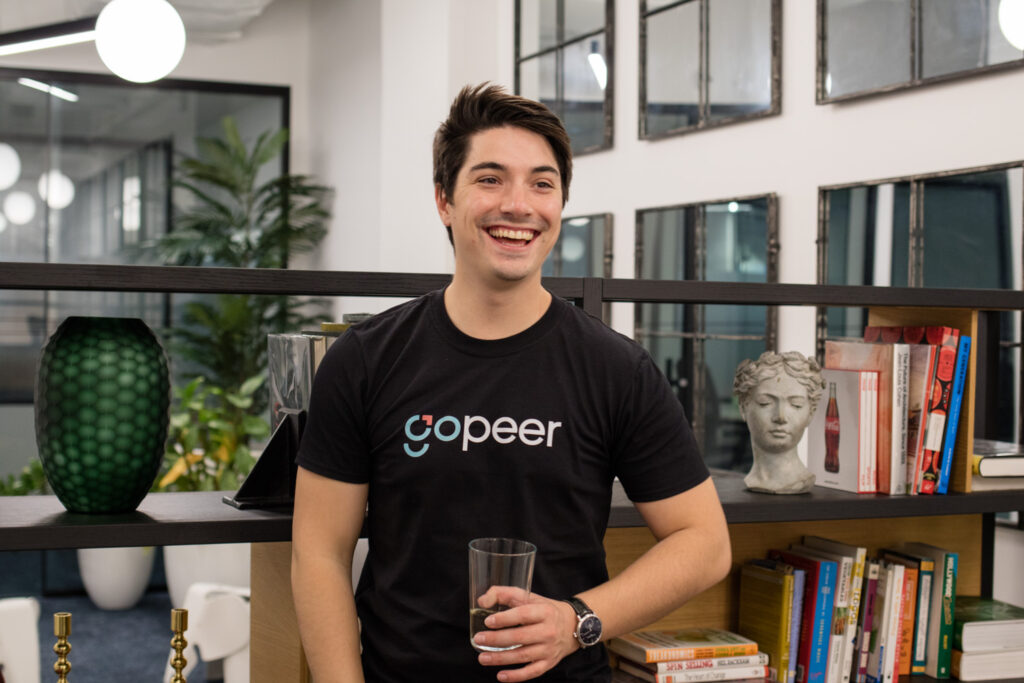
Looking ahead, what’s your vision for the next five years?
Marc: To make goPeer the go-to alternative to traditional banks in Canada. We want to keep strengthening our core, expand into new products, and also play a bigger role in financial literacy so Canadians can not only borrow or invest, but improve their financial health.
Joseph: Our focus is on the core, consumer loans and private credit. The more adoption we build, the more impact we can have, because returns flow directly back to Canadians. We’ll continue scaling, adding new products, and expanding awareness, but always with the mission of helping Canadians and strengthening the community.
The journey of goPeer has always been about more than finance, we had this vision of building a community where Canadians can lift each other up. After five years and over $50 million funded, the mission is stronger than ever.
